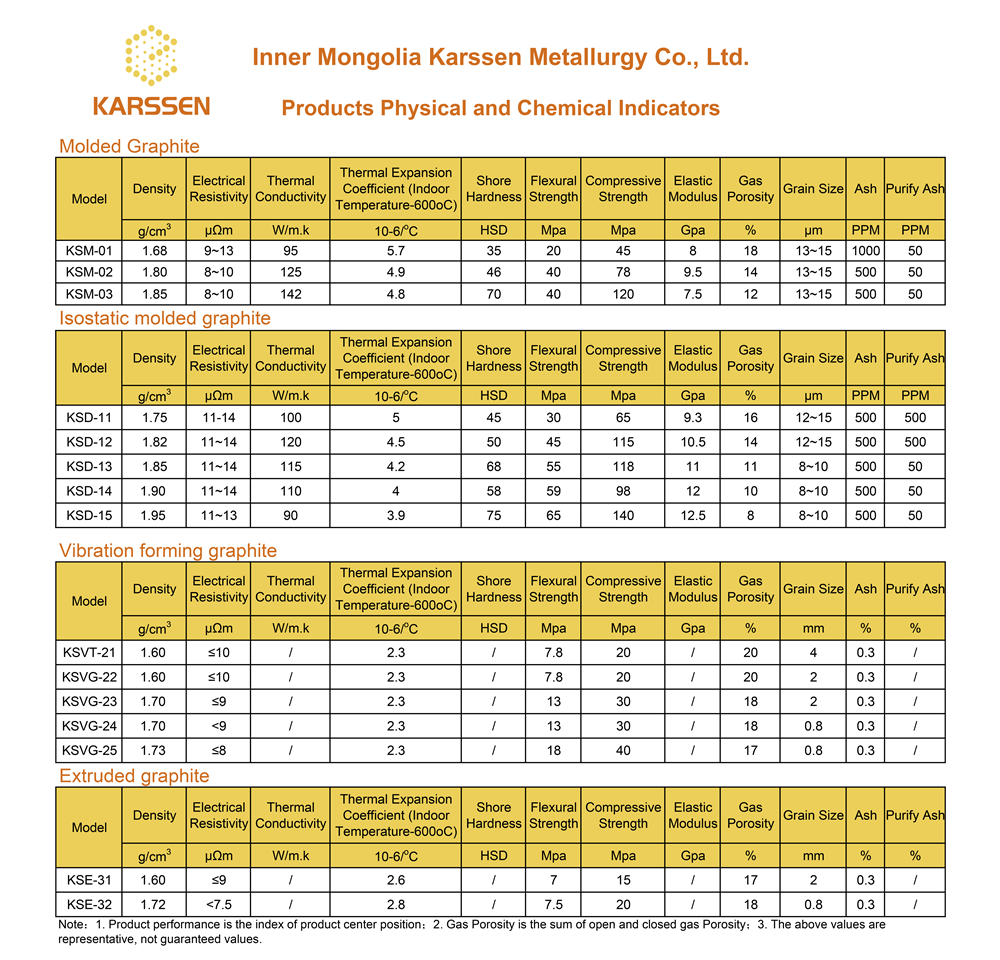Email: info@karssenmetal.com Tel: +86 18147353336
Graphite electrode wheel

Optical fiber is a communication medium that uses the principle of total internal reflection of light to transmit information. It has the advantages of fast transmission speed, large bandwidth, low loss, and strong anti-interference. It is widely used in communications, data, video and other fields. The manufacturing process of optical fiber mainly includes steps such as preform preparation, fiber drawing, fiber coating and fiber testing. In these steps, graphite parts play an important role. This article will introduce the graphite parts used in the optical fiber manufacturing process from the following aspects.
Preform preparation
The preform is the raw material of optical fiber. It is a cylindrical glass rod composed of high-purity silica (SiO2) and other dopants. Its diameter is generally 10~20 mm and its length is 1~2 meters. There are two main methods for preparing preforms: Chemical Vapor Deposition Method (CVD) and Modified Sol-Gel Method (MSG). Among these two methods, the main parts made of graphite are as follows:
- Graphite crucible: a container used to hold and heat sol-gel or gaseous precursors. It has the advantages of high temperature resistance, high chemical stability, high thermal conductivity, etc. It can maintain its shape and performance under high temperature and pressure, and promote sol Transformation and deposition of gel or gaseous precursors.
- Graphite electrode: A conductor used to provide current and voltage into the crucible. It has the advantages of high conductivity, low resistance, and low loss. It can maintain good electrical contact performance under high temperature and high pressure, and improve heating efficiency and uniformity.
- Graphite mold: A tool used to shape and cool preforms. It has the advantages of high temperature resistance, low thermal expansion coefficient, low friction coefficient, etc. It can maintain the same size and accuracy under high temperature and pressure, and prevent deformation and cracks of preforms.
fiber drawing
Optical fiber drawing refers to the process of heating the preform to a softened state and then stretching it into a slender optical fiber through a traction machine, with a diameter generally ranging from 125 to 250 microns. The key equipment for fiber drawing is the drawing tower, whose main components include heating furnace, coater, traction wheel, winding machine, etc. Among these parts, the main parts made of graphite are as follows:
- Graphite heating element: an element used to provide heat to the heating furnace. It has the advantages of high temperature resistance, high thermal conductivity, high radiation, etc. It can maintain stable temperature distribution and thermal field uniformity under high temperature and high pressure, and improve the preform The heating effect and the quality of the optical fiber.
- Graphite nozzle: a component used to control the drawing speed of the preform and the diameter of the optical fiber. It has the advantages of high temperature resistance, low thermal expansion coefficient, low friction coefficient, etc., and can maintain precise size and shape under high temperature and high pressure, preventing Fiber breaks and fluctuations.
- Graphite lubricant: a substance used to reduce friction and wear between optical fibers and coaters, traction wheels and other components. It has the advantages of low friction coefficient, high temperature resistance, high chemical stability, etc., and can maintain high temperatures and pressures Good lubrication performance, extending equipment life and fiber life.
Optical fiber testing
Optical fiber testing refers to the process of measuring and evaluating the geometric parameters, mechanical parameters, optical parameters, etc. of optical fibers. The purpose is to ensure the quality and performance of optical fibers and meet the requirements of different applications. The main equipment for optical fiber testing includes Geometrical Parameter Tester, Mechanical Parameter Tester, Optical Parameter Tester, etc. Among these equipment, the main parts made of graphite are as follows:
- Graphite clamp: A tool used to fix and move optical fibers. It has the advantages of high temperature resistance, low thermal expansion coefficient, low friction coefficient, etc. It can maintain the position and direction of the optical fiber unchanged under high temperature and high pressure, and prevent damage and errors of the optical fiber.
- Graphite blade: A tool used to cut and clean optical fibers. It has the advantages of high temperature resistance, high hardness, and high sharpness. It can maintain the accuracy and effect of cutting under high temperature and pressure, and prevent fiber breakage and contamination.
- Graphite electrode: A conductor used to provide current and voltage to optical fibers. It has the advantages of high conductivity, low resistance, and low loss. It can maintain good electrical contact performance under high temperature and high pressure, and improve the efficiency and accuracy of testing.
Graphite parts play an important role in the optical fiber manufacturing process, mainly including graphite crucible, graphite electrode, graphite mold, graphite heating element, graphite nozzle, graphite lubricant, graphite coating mold, graphite UV lamp, graphite UV reflector Mirror, graphite fixture, graphite blade, etc. These parts have the advantages of high temperature resistance, high electrical conductivity, high thermal conductivity, low thermal expansion coefficient, low friction coefficient, etc. They can maintain stable performance and shape under high temperature and high pressure, and improve the quality and performance of optical fibers. With the advancement of science and technology and the growth of demand, the application of graphite parts in the optical fiber manufacturing process will continue to deepen and expand, making important contributions to the development and progress of the optical communication field.
Isostatic graphite blocks are an important graph
Graphite rotor belongs to graphite material, whi
Graphite sheets have many important roles in the
Contact: Bateer
Phone: +86 18147353336
Tel: +86 18147353336
Email: info@karssenmetal.com
Add: Room D204-2203, Innovation Building, Baotou Light Industry Vocational Technical College, 19 Jianhua Road, Qingshan District, Baotou City, Inner Mongolia, China.